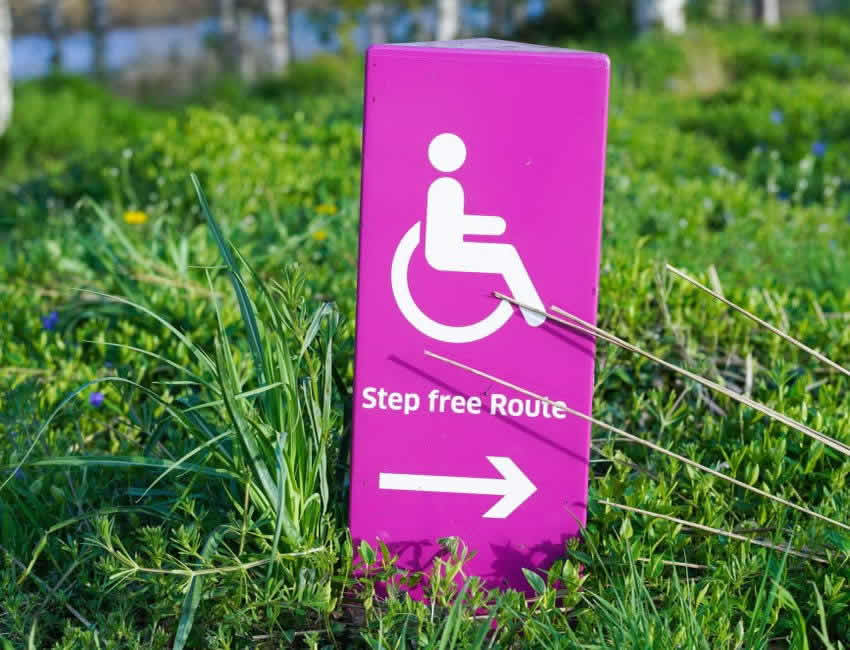Choosing a wheelchair for an elderly person, a disabled person or a person with restricted mobility is a complex matter. There are many variables you need to take into consideration, in terms of intended use and times of use, the specific needs of the person, their assistant or their family members who will take care of them.
Choosing a wheelchair, therefore, involves carefully weighing up a wide variety of needs, ranging from assessing the state of health of the user and then assessing the types and timescales of use.
Here is a useful and complete vademecum of the main types of wheelchairs: a universe with four wheels that can significantly improve the quality of life of those living with a disability.
Standard wheelchairs are folding-frame wheelchairs, available in the self-propelling version with large, rear wheels that an elderly or disabled person can move by themselves, and in the transit version. The latter differs in that the rear wheels have a smaller diameter, that allow mobility only with the help of an assistant or family-member. In most cases the frame of the standard wheelchair, whether in steel or a lighter aluminium, allows you to mount both types of wheels and in some cases it is also provided with a quick release system that enables you to change from one type to the other with ease.
As regards the Ardea brand wheelchairs made by Moretti, the Start and Start 1 models fall into the self-propelling type which, unlike the first, have the quick release system and small wheels for tight passages; the Next, which also has quick release and features a double cross frame capable of ensuring greater sturdiness and a consequent expanded capacity of up to 150 kg; the Dual, also has the double cross frame and quick release feature but also includes adjustable, folding and removable armrests and a double hole in the structure that can make it even easier to change to the transit version; last but not least the Helios line, whose main differentiating feature is its lighter aluminium frame.
Conversely, the Next Go and the Dual Go are transit wheelchairs with quick release to switch to the self-propelling configuration, and this series also includes the Go Up with a brake for the assistant and folding backrest for easy transport, and the line of Helios light wheelchairs in the Go version.
Standard wheelchairs, available in various sizes, are very sturdy products that can last a long time and respond to the needs of all those who have reduced mobility, that may be short-term or long-term, and seek a high-performance aid that is easy to use.
Special wheelchairs are wheelchairs, equipped with a rigid or folding frame, which aim to meet certain specific needs.
These aids can, for example, solve problems with mobility in order to allow users to move about more independently, or be products designed and built for specific needs such as transfers for persons with mobility impairments at airports or in stations, or to allow access to tight spaces or to meet mobility needs of specific types of users such as children, obese people or considerably large people or those who have a significant form of disability.
With Ardea By Moretti we can find:
the Skinny: a wheelchair with reduced dimensions that ensures easy access even through narrow lifts and doors. Skinny is available in both self-propelling and transit versions and requires minimum space with a width of only 40 cm.
the Plus and Plus Go are respectively in self-propelling and transit versions. These wheelchairs are designed for obese users or those of a significant size. They have a wider seat and a structure that is able to carry users of up to 200 kg in weight.
the Kiddy, designed for children. This is a self-propelling wheelchair available with a double foot-board with standard and adjustable height and adjustable handles to help assistants with their pushing.
the Travel, specifically designed for covering small distances. This is a lightweight and compact wheelchair that is easy to carry, has an essential structure and a bag in which to carry it.
the chair with a reclining back and extendable back, called the Comfy and the multi-purpose Relief chair aim to meet the mobility needs of people with a severe or medium-long term disability. These are wheelchairs which provide the spinal column with greater support and allow a greater number of adjustments, so as to achieve the perfect fit for the specific needs of the end-user.
With the aim of adapting as effectively as possible to the needs of its users, the whole Ardea line also offers a wide range of accessories that can enhance the comfort and functionality of its wheelchair range.
Wheelchairs can, for example, be equipped with armrests and foot-boards that are adjustable in height and are very useful for keeping legs raised during or after a plaster cast or in the case of circulatory or post-operative problems. They can also be supplied with a headrest and anti-decubitus cushions of various shapes and sizes, selected from the Levitas line by Moretti, according to specific needs.
This wide range of accessories also covers safety and containment seat belts provided by the Koala line, warm and waterproof blankets, rigid or soft tables and stands to carry a “drip” or an oxygen bottle.
The aspect that makes Ardea by Moretti stand out in a crowd, in addition to its vast range that allows all types of users to find a product fully adapted to their needs, is the immediate availability of all its products, spare parts and accessories.
With more than forty years of experience in the market, Moretti has an efficient system of logistics that can dispatch orders within 24 hours.
Lastly, Moretti also prides itself on a high-quality after-sales service that can assist customers with any issue regarding use or installation of the product.










